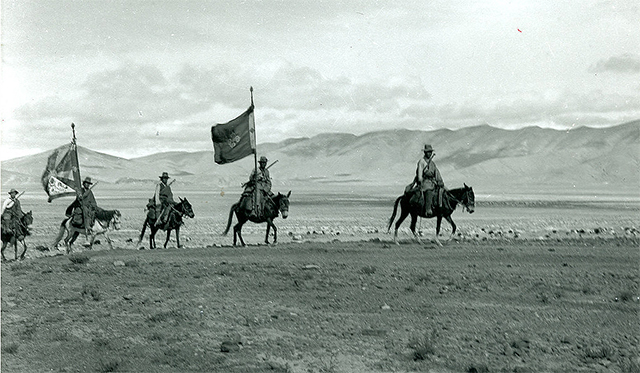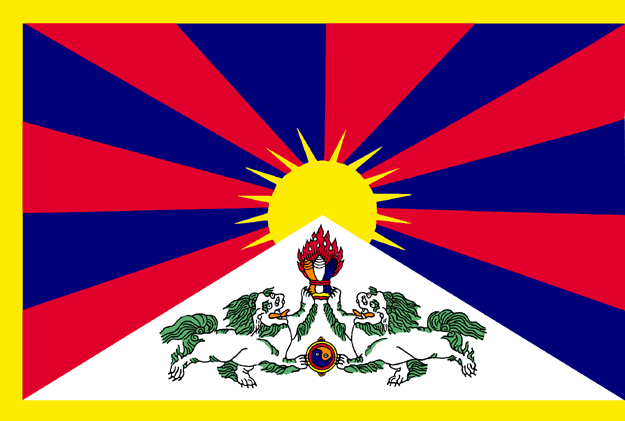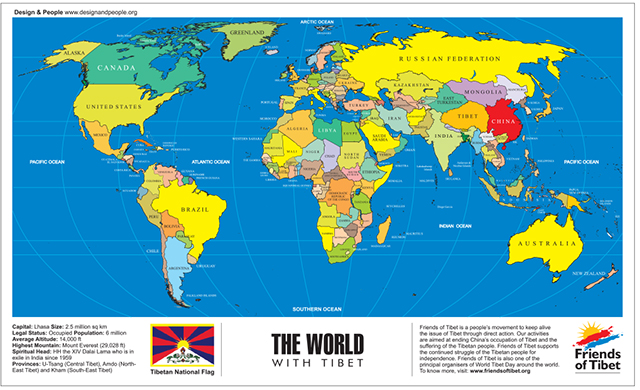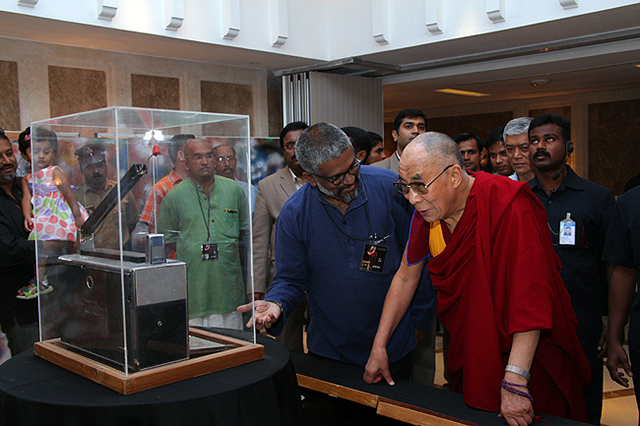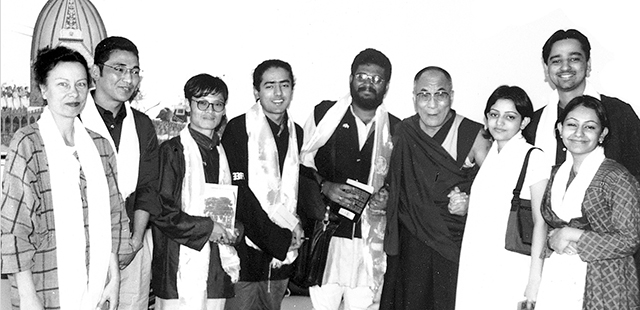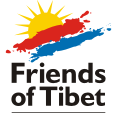
| WHY TIBET | WHY BOYCOTT | HUMAN RIGHTS | REPORTS | PHOTOS | VIDEOS | DONORS |
| TIBET FOUNDATION | TIBET RESEARCH | SRI AUROBINDO ON TIBET | OSHO ON TIBET | WORLD TIBET DAY |
⋯
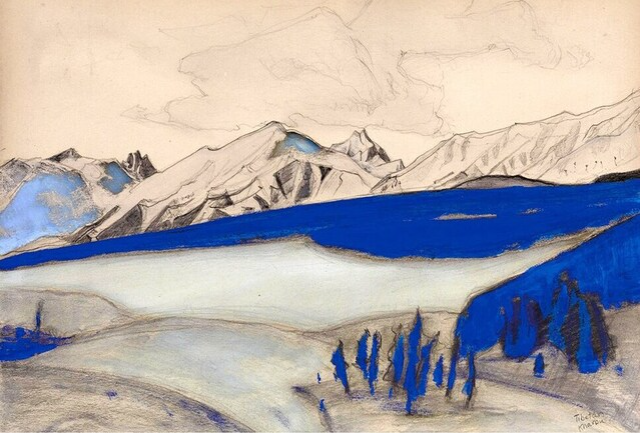
"When the Chinese Communist armies marched into Tibet in 1950 and occupied the eastern part of it, I and my people found ourselves in a helpless and almost hopeless situation. We appealed to several of the leading nations of the world, and to the United Nations, to intervene on our behalf, but our pleas for help were rejected. It was many centuries since Tibet had been a military power, for we believe in the path of peace and have tried to follow it ever since the wisdom of Lord Buddha was brought to our country from India over a thousand years ago; and since our national life was devoted to our religion, our material resources were very small." (His Holiness the XIV Dalai Lama of Tibet in 'My Land and My People') //
Why Tibet?
TIBET, the inspiration behind the ideal of 'Shangri-la' or Paradise on Earth, has a rich and vividly unique culture of its own. Ruled by the Dalai Lamas since 1642, and for centuries before that by a succession of religious kings and other priestly rulers, it is one of the few nations in the world with such a long history of continued independence.
"For many Tibetans material life was hard, but they were not the victims of desire, and in simplicity and poverty among our mountains, perhaps there was more peace of mind than there is in most of the world," so says His Holiness the XIV Dalai Lama in his autobiography 'My Land and My People'.
Tibet was a peaceful, independent state when, in 1949, it was invaded by China in an act of unprovoked aggression. In 1959 His Holiness the Dalai Lama was forced to seek political asylum in India, along with his entire government and tens of thousands of ordinary Tibetans. Since then Tibet has never been the same and the lives of all Tibetans has changed entirely. Faced with brutal oppression and treated as second-class citizens in their own country, many Tibetans still risk their lives to join their leader in exile. Here they are confronted with another problem — the sad predicament of refugees everywhere. To say the least, the fate of the vast majority who remain in Tibet is far worse.
Throughout the early decades of the occupation, tens of thousands of Tibetans were killed and many more sent to prisons and concentration camps. During this period more than 6,000 temples and monasteries — including vast Buddhist universities and ancient libraries — were looted, burned and destroyed. Even today, despite some cosmetic changes, largely for the benefit of tourists or visiting dignitaries, Tibetan religion and culture has not recovered from the decades of suppression and continues to suffer from neglect and discrimination. Rampant and indiscriminate exploitation of Tibet's vast natural resources is also threatening the fragile ecological balance of the Roof of the World. However, the single biggest threat to the survival of the Tibetan people is China's policy of population transfer aimed at reducing Tibetans to an insignificant minority in their own country by sending in millions of landless, and jobless Chinese. The distinct cultural ties between India and Tibet — the most obvious being the spread of Buddhism from India to Tibet in the seventh century — is perhaps too well known to bear repeating here. The trade and economic ties between the two countries is perhaps even older. It is equally important to remember that India maintained independent relations with Tibet throughout our shared history. Never, until China's military occupation of Tibet after 1949, has India ever shared a common border with China. Today India spends more money to defend our northern border with Chinese occupied Tibet than we do to protect our border with Pakistan. Even in the case of our western border, much of the problem is linked to the political, economic and the military support that China gives to Pakistan.
Joined together by almost the entire length of the mighty Himalayan range — India and Tibet are also inseparably linked in a physical sense. With such an extensive common frontier, the environmental changes on one side inevitably affects the other. It is for this reason that China's destruction of Tibet's fragile environment — not only through indiscriminate deforestation and mining but also by dumping nuclear and other toxic wastes — should be a major concern to every Indian. The implications of having China as our permanent northern neighbour or even the single issue of any of the rivers flowing from Tibet to India becoming polluted by toxic waste is too serious to be left to chance.
Friends of Tibet believes that all the issues raised above are of a global nature — not only in terms of the principles involved but also in terms of their impact. It is no longer just a question of helping an oppressed people and supporting a peaceful and friendly neighbour. Today the question of Tibetan independence is inseparably linked to India's long-term future.
Let us act now to make Tibet free!
BEFORE the Chinese Communist invasion of 1950 Tibet was a fully functioning and independent state. It threatened none of its neighbors, fed its population unfailingly, year after year, with no help from the outside world. Tibet owed no money to any country or international institutions, and maintained basic law and order. Tibet banned capital punishment in 1913 (mentioned by a number of foreign travelers) and was one of the first countries in the world to do so. There is no record of it persecuting minorities or massacring sections of its population from time to time as China and some other countries do — remember Tiananmen. Although its frontiers with India, Nepal and Bhutan were completely unguarded, virtually no Tibetan fled their country as economic or political refugees. There was not a single Tibetan immigrant in the USA or Europe before the Communist invasion. //
An English radio operator (employed by the Tibetan Government) at the Chamdo front wrote that Tibetan forward defences at the main ferry point on the Drichu River fought almost to the last man. In the south at the river crossing near Markham, the Tibetan advance guards fought heroically but were wiped out, according to an English missionary there.6 Surviving units conducted fighting retreats westwards, in good order. No unit fled or surrendered. Four days into the retreat, one regiment was overwhelmed and destroyed. Only two weeks after the initial attack, the Tibetan army surrendered. The biography of a Communist official states "Many Tibetans were killed and wounded in the Chamdo campaign." and "...the Tibetan soldiers fought bravely, but they were no match for the superior numbers and better training" of the Chinese forces. According to the only Western military expert who wrote on the Chinese invasion of Tibet "...the Reds suffered at least 10,000 casualties."
It was not a peaceful liberation of Tibet as Beijing claims. In 1956 the Great Khampa revolt started and spread throughout the country culminating in the March Uprising of 1959. Guerilla operations only ceased in 1974. "A conservative estimate would have to be no less than half-a-million" Tibetans killed in the fighting. Many more died in the subsequent political campaigns, forced labor camps (laogai) and the great famine. The revolutionary uprisings throughout Tibet in 2008 and the brutal Chinese crackdown clearly demonstrate that the struggle continues today. ◼
National Flag
THE modern Tibetan national flag was adopted in 1916. Its first appearance before the world was in National Geographic Magazine's "Flags of the World" issue of 1934 and other publications, and was reproduced in the early thirties in cigarette card collections in Europe. The flag was probably too new and unknown to appear in the very first flag issue (1917) of the National Geographic, but Tibet did receive mention in an article on medieval flags in that same issue. According to an eminent vexillologist, Professor Lux-Worm, the national flag of Tibet was based on an older 7th century snow lion standard of the Tibetan Emperor, Songtsen Gampo. It should be borne in mind that over 90% of the flags of the nations in the UNO were created after WWII, including the present national flag of China. //
National Anthem
THE old Tibetan national anthem or national hymn, Gangri Rawae or "Snow Mountain Rampart" was composed in 1745 by the (secular) Tibetan ruler Pholanas.
It was recited at the end of official ceremonies and sung at the beginning of opera performances in Lhasa. When the Tibetan government came into exile in India, a more modern national anthem, Sishe Pende ("Joy and Benefits") was composed. The lyrics were written by Dalai Lama's tutor, Trichang Rimpoche who was considered a great poet in the classical nyengak (Skt. kaviya) tradititon. ◼
Maps of Tibet
The World With Tibet: The world map showing Tibet as an Independent country was released by Venerable Geshe Lhakdor, Official Translator of HH the Dalai Lama on December 10, 2007 — World Human Rights Day — by giving a copy to Rohit Singh, Friends of Tibet Campaigner who conceptualized 'The World With Tibet' education campaign.
MANY pre-1950 maps, globes and atlases showed Tibet as an independent nation separate from China. Some of the earliest maps on record of Asia show Tibet (variably spelled as Tobbat, Thibbet, or the Kingdom of Barantola) as separate from China or Cathay. A map of Asia drawn by the Dutch cartographer,
Pietar van der Aa around 1680 shows Tibet in two parts but distinct from China; as does a 1700 map drawn by the French cartographer Guillaume de L'isle, where Tibet is referred to as "Kingdom of Grand Tibet." A map of India, China and Tibet published in the USA in 1877 clear represents Tibet as distinct from the two other nations. An 1827 map of Asia drawn by Anthony Finley of Philadelphia, clearly show "Great Tibet" as distinct from the Chinese Empire. Probably the largest stained glass globe in the world (in Boston), based on the Rand McNally 1934 map of the world, clearly shows Tibet as a separate nation.
Following the publication of the great atlas commissioned by the Manchu Emperor Kangxi and created by Jesuit cartographers, some European maps in the mid-1700s began to depict Tibet as part of China. The Jesuits could not personally survey Tibet (as they had surveyed China and Manchuria) since Tibet was not part of the Chinese Empire. So they trained two Mongol monks in Beijing and sent them to make a secret survey of Tibet. Similar clandestine surveys of Tibet were conducted by British mapmakers using trained Himalayan natives and even a Mongol monk. An American sinologist has observed that, like European colonial powers, China could be said to have used cartography to further its "Colonial Enterprise" in Tibet and Korea. ◼
Tibetan Currency
BEFORE the Chinese invasion, Tibet had its own currency based on the Tam and Srang denomination system. The earliest coinage used in Tibet was silver and struck in Nepal under a treaty agreement. A joint Chinese-Tibetan currency (the Ganden Tanka) was issued when Manchu forces occupied Tibet. After the Chinese army was expelled in 1912, Tibet minted its own coin using Buddhist and Tibetan designs. Paper currency was only introduced into Tibet in the early 20th century, but according to the numismatist Wolfgang Bertsch, they were "small works of art." A unique aspect of Tibetan banknotes was that the serial numbers were handwritten by a guild of specialist calligraphists, the epa, to prevent forgery.
Even after the Communist invasion, Tibetans successfully undermined Chinese efforts to take over its currency. Official Chinese currency only came into use
after the departure of the Dalai Lama and the Tibetan government from Tibet in March 1959. ◼
Tibetan Passport
The historic Shakabpa Passport was issued by the then Government of Independent Tibet in 1947 to the Finance Secretary Tsepong Wangchuk Dedhen Shakabpa
who was leading a trade delegation to China, the United States and Britain. On this passport, visa and transit visa were issued by countries like the United Sates, Britain, India, France, Italy, Switzerland, Saudi Arabia and Egypt. However, this document got lost from the Tibetan community in 1992 and there were rumours that it had been sold to antique dealers and reached into the hands of Chinese government officials. After 13 years of mystery and search, Friends of Tibet located it with an antique dealer in Nepal, and later bought it for an undisclosed amount and was later presented to HH the XIV Dalai Lama in 2004. Today this document remains to stand as an important proof of independent status of Tibet legally recognised by other countries before China's invasion of Tibet in 1949. // More about Shakabpa Passport
THE Tibetan government issued its own passports to travelers entering its borders or (the few) Tibetans who traveled abroad. Before WWII, the term passports covered visas and travel documents in general. The earliest record of a Tibetan passport issued to a foreign traveler is in 1688 to an Armenian merchant, Johannes. The Tibetan government gave its approval for the first-ever Everest expedition (1921). Charles Bell, the visiting British diplomat in Lhasa wrote "I received from the Tibetan Government a passport in official form, which granted permission for the climbing of Mount Everest." The subsequent Everest expeditions of 1922, 1924 and 1936 also received passports from the Tibetan government. Passports were sometimes issued for scientific undertakings: the Schaeffer expedition of 1939, Tucci's expedition of 1949 and the plant hunter Frank Kingdon Ward in 1924.
President Roosevelt's two envoys to Tibet in 1942 were presented their passports at Yatung. The Americans Lowell Thomas Jr and Sr visited Tibet in 1949, and were issued "Tibetan passports" at Dhomo. "When the Dalai Lama's passport was spread out before us, I could not help thinking that many Western explorers who had failed to reach Lhasa would have highly prized a document like this." The first modern Tibetan passport with personal information, photograph and space for visas and endorsements was issued in 1948 to members of the Tibetan trade mission. It was modeled on the international one-page fold-out model of 1915. Britain, USA and seven other countries issued visas and transit visas for this document. ◼
ONE of the most important treaties between the Tibetan Empire and the Chinese Empire dates back to AD 821-822. The text, carved in Tibetan and Chinese on a stone pillar near the Jokhang temple in Lhasa states that 'Great Tibet' and 'Great China' would act towards each other with respect, friendship and equality. As an independent nation, Tibet entered into treaties with neighboring states: Bushair 1681, Ladakh 1683 and 1842, Nepal 1856 and so on. Tibet signed a number of treaties and conventions with Britain culminating in the Simla Treaty of 1914 by which British India and Tibet reached an agreement on their common frontier. India's present-day claims to the demarcation of its northern border is based on this treaty which was signed by Tibet — not China.
In January 1913, Tibet and Mongolia signed a treaty in Urga, the preamble of which reads: "Whereas Mongolia and Tibet having freed themselves from the Manchu dynasty and separated themselves from China, have become independent states, and whereas the two States have always professed one and the same religion, and to the end that their ancient mutual friendships may be strengthened..." Declarations of friendship, mutual aid, Buddhist fraternity, and mutual trade etc. follow in the various articles. The Tibetan word Rangzen is used throughout to mean "independence".
A Tibetan Bureau of Foreign Affairs was established in 1942, which conducted diplomatic relations with Britain, USA, Nepal, independent India and China. ◼
Witnesses to Independent Tibet
THE fact that Tibet was a peaceful, independent country is attested to by the writings of many impartial western observers who not only visited pre-invasion Tibet, but even lived there for considerable periods of time — as the titles of some of their memoirs seem to proudly proclaim: Twenty Years in Tibet (David McDonald), Eight Years in Tibet (Peter Aufschnieter), Seven Years in Tibet (Heinrich Harrer). The premier scholar on Tibet, Hugh Richardson lived for a total of eight years in Tibet, and his many writings reveal a country that was functioning, orderly, peaceful and with a long history of political independence and cultural achievement. Another great scholar and diplomat, Charles Bell, regarded as the "architect of Britain's Tibet policy," was convinced that Britain and America's refusal to recognise Tibetan independence (but which they sometimes tacitly acknowledged when it was to their advantage) was largely dictated by their desire "to increase their commercial profits in China."
It is almost certain that none of the official propagandists who demonise Tibet in Chinese publications had witnessed life in old Tibet. In fact, none of Beijing's Tibet propagandists in the West (Michael Parenti, Tom Grunfeld, Barry Sautman et al) had visited Tibet before 1980. They often misrepresent old Tibetan society and government with select quotes from English journalists and officials (LA Waddell, Percival Landon, Edmund Candler, Captain WFT O'Connor) who accompanied the British invasion force of 1904, and who sought to justify that violent imperialist venture into Tibet by demonising Tibetan society and institutions.
The only Chinese official with scholarly credentials who spent any length of time in old Tibet was Dr Shen Tsung-lien, representative of the Republic of China in Lhasa (1944-1949). In his book Tibet and the Tibetans, Dr Shen writes of a nation clearly distinct from China, and one that "...had enjoyed full independence since 1911." He writes truthfully of a hierarchical, conservative society "fossilised many centuries back" but whose people were orderly, peaceable and hospitable — but also "notorious litigants," adding that "few peoples in the world are such eloquent pleaders." Shen also mentions "Appeals may be addressed to any office to which the disputants belong, or even to the Dalai Lama or his regent." ◼
Founded by Sethu Das in 1999 with just one member, Friends of Tibet (India) started its activities as an email club — informing people about the latest from the Chinese-occupied Tibet and from the Tibetan community in exile in India. The website of the organisation was inaugurated by Venerable Yeshi Togden, president of Gu-Chu-Sum Movement of Tibet, an association of former political prisoners from Tibet on March 9, 1999 at Dharamshala — the seat of the Tibetan Government-in-Exile. Friends of Tibet is a people's movement to keep alive the issue of Tibet through direct action and its activities are aimed at ending China's occupation of Tibet and the suffering of the Tibetan people. Friends of Tibet supports the continued struggle of the Tibetan people for independence. Friends of Tibet is also one of the principal organisers of World Tibet Day around the world. (Photo: Ramesh Kumar PS) //
Friends of Tibet Committee Members with His Holiness the XIV Dalai Lama of Tibet (1999): (L-R) Jaqueline Meier, Lobsang Tsering, Tenzin Tsundue (General Secretary), Prashant Varma (Organisational Secretary); Sethu Das (President), Purnima Phansalkar (National Coordinator), Harsh Piramal and Reshma Piramal (Vice President). (Photo: Office of His Holiness the Dalai Lama) //
Team Friends of Tibet with His Holiness the XIV Dalai Lama of Tibet (2018): (L-R) Vijay M Crishna, Smita Godrej, Dr Dorjee Rapten Neshar, Sethu Das, Arun Gandhi, Tushar A Gandhi, Sunil Sridhar and Santosh Kangutkar with HH the XIV Dalai Lama on December 12, 2018. (Photo: Office of HH the Dalai Lama) //
Friends of Tibet, PO Box 16674, Mumbai 400050, India.
⋯
Digital Support: Design & People, India + Ibiblio Digital Library & Archive Project, University of North Carolina, USA |
